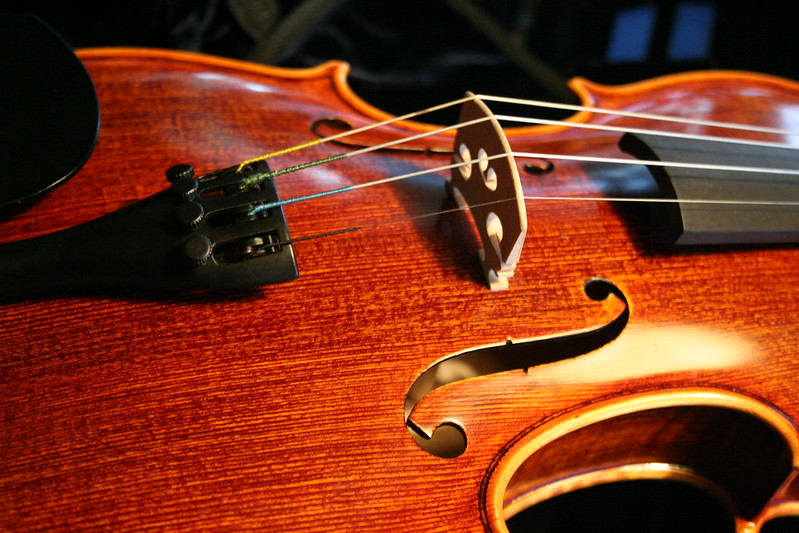Changing Violin Strings
Posted on January 31, 2019

The big project of this weekend was to accomplish three things:
- Change the bridge
- Change the strings
- Apply peg compound
Changing out the bridge wasn’t too difficult. My goal was to get a self-adjusting bridge so that I could ensure the feet of the bridge were flush with the violin. The bridge feet can pivot and swivel just slightly in this particular make, which seemed to work just the way I hoped. Otherwise, you have to figure out how to file and shape the bridge — there are a lot cheaper bridges out there than the one I bought, but I was shooting for something I could put on with little hassle. So far, it’s worked the way I hoped.
Then I had to learn how to change the actual strings. I already knew that you don’t take all the strings off at once when you change them. The idea is that there needs to be some strings still on the bridge for the bridge to be putting pressure down on the sound post to keep it in place.
Actually changing strings wasn’t too hard. Here’s the video I watched to get the job done:
A lot of professionals seem to swear by Dominant brand strings, but I was just looking for something within a lower price range to replace the cruddy strings that came with my kit. Preludes were also well-rated and seemed geared towards a student learner, so I went with a set of those.
While I changed my strings, I took the opportunity to do two things:
- Put graphite on the nut
- Apply peg compound
You can just use a regular No 2 pencil to scribble some graphite on the string groove on the nut. I hear that helps the string move with less friction.
Peg compound is something you put around the part of the tuning peg that fits into the peg hole. The kind I got looks a bit like a brown tube of lipstick. It’s made to both lubricate and keep the peg from slipping to keep the string in tune. So far, I have seen a noticeable difference for my G, D, and A strings. Once the new strings stretched a bit, they’ve actually stayed in tune well. The E string… well, that’s another story that I’m going to have to figure out.
With all these improvements to my violin, I felt I was finally able to sit down and spend less time fighting with the instrument and more time progressing and learning. The whole process has certainly taught me a lot about the instrument!